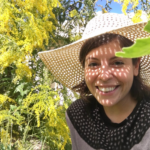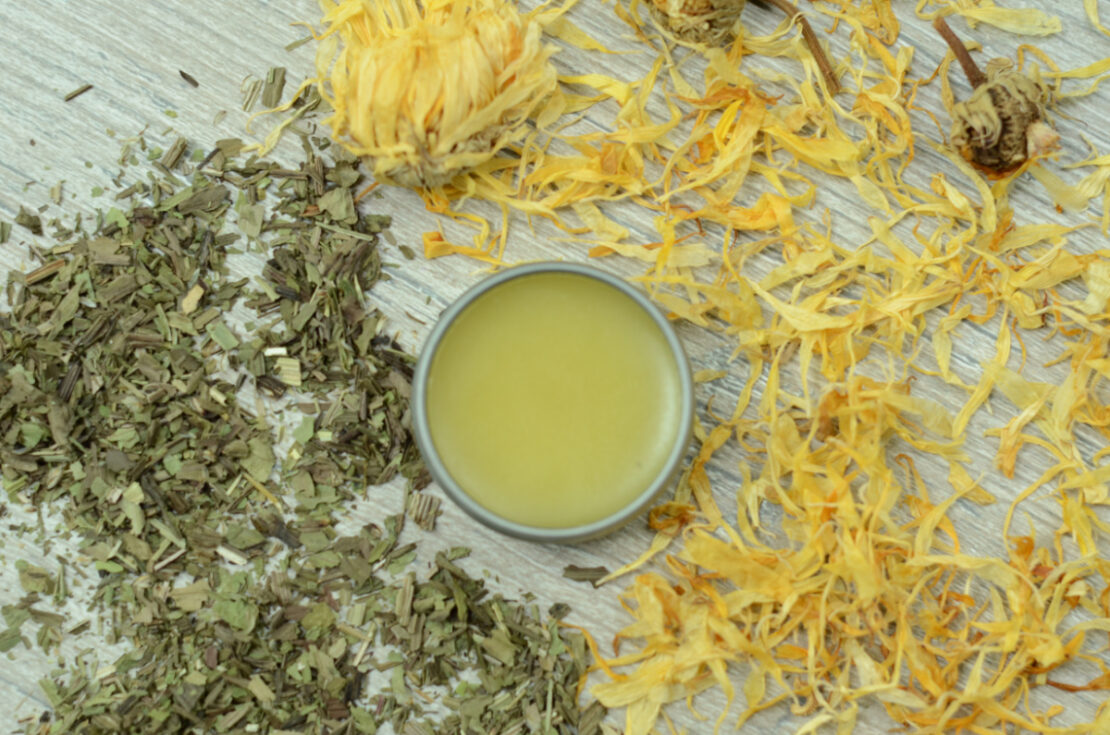
Homemade Bug Bite Salve for Itchy Spots
The summertime invites us outdoors to bask in the warmth of the sun and enjoy more physical activity. All of this time outdoors leaves us sunkissed, grounded, and also, in many cases, bug-bitten. Like all the best things in life, there’s always a little bitter with the sweet. A homemade bug bite salve is the perfect way to help you cope with the biting parts of summer!
Salve Making
Salves can be formulated with as specific or as broad an application as you choose. Traditional methods of salve making include heating herbs in lard or beef tallow, but nowadays more herbalists make salves by combining infused herbal oils and beeswax.
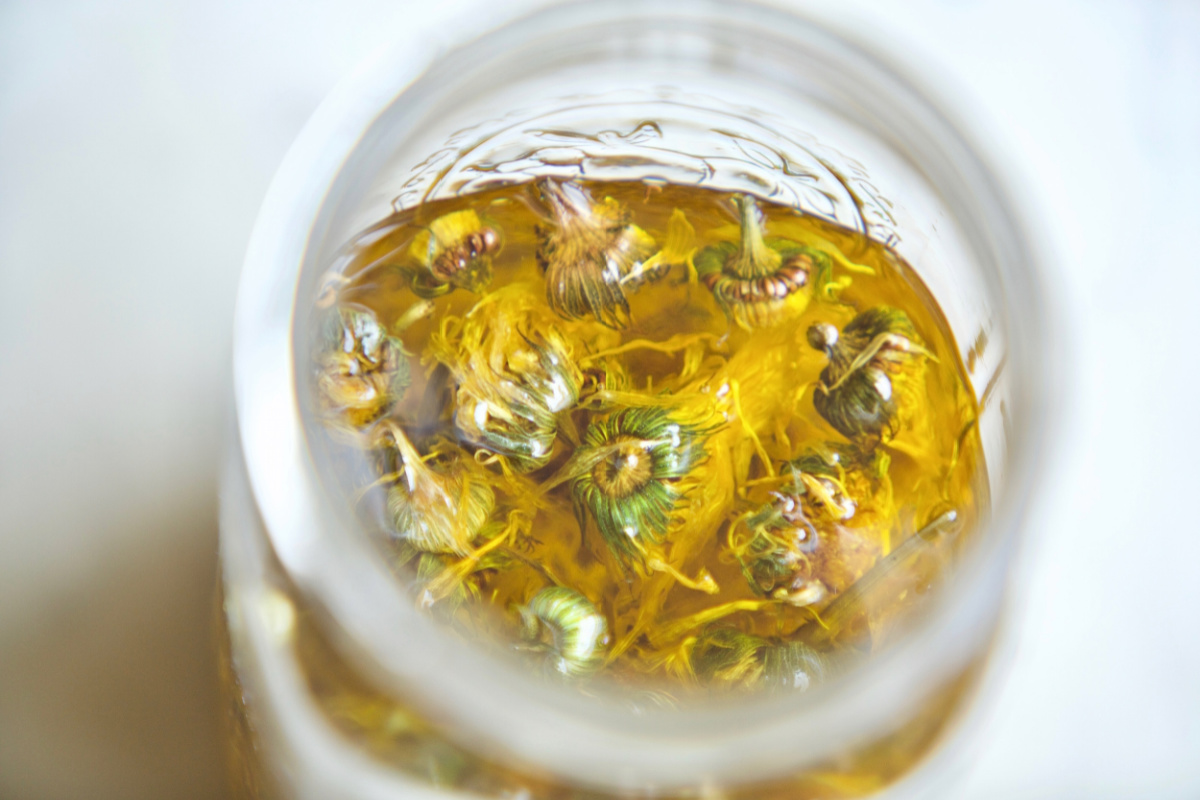
Preparing the Infused Oil
To prepare an infused oil, simply cover the chosen herbs in your preferred oil. When choosing an oil for topical use I prefer jojoba. It is a bit more expensive, but this liquid wax doesn’t spoil, which greatly increases the shelf life of my fixed oils and oil-based creations. Good quality olive oil can also be used and is more widely available. A few more options are described in this article about oils that can be used as carrier oils for herbs which are also used in soapmaking.
If you have a few days, one option for infusing dried herbs into oil is to allow them to sit in maceration for 14-28 days. In this method, it is important to pick up the macerating container (typically a lidded glass jar) and give it a good shake once or twice a day. This agitation keeps the marc and menstruum mingling to allow for maximum transfer between the plant material and the oil.
Whenever I am using fresh herbs or am in a pinch for time with an oil preparation, I prefer to use the heated method (described in the bug bite salve recipe below and in this article How To Make Herb-Infused Oils). This process allows for the water from the fresh plant to heat up and escape. Residual water in the infused oil can lead to spoilage. I recommend wilting fresh herbs overnight as this will allow the herbs to release some of their moisture without becoming too dried out.
Bug Bite Salve Herbal Allies
The following herbs were chosen for their ability to soothe, balance inflammation, draw, and help fight infection. All of these are worthwhile qualities in your homemade bug bite and salve.
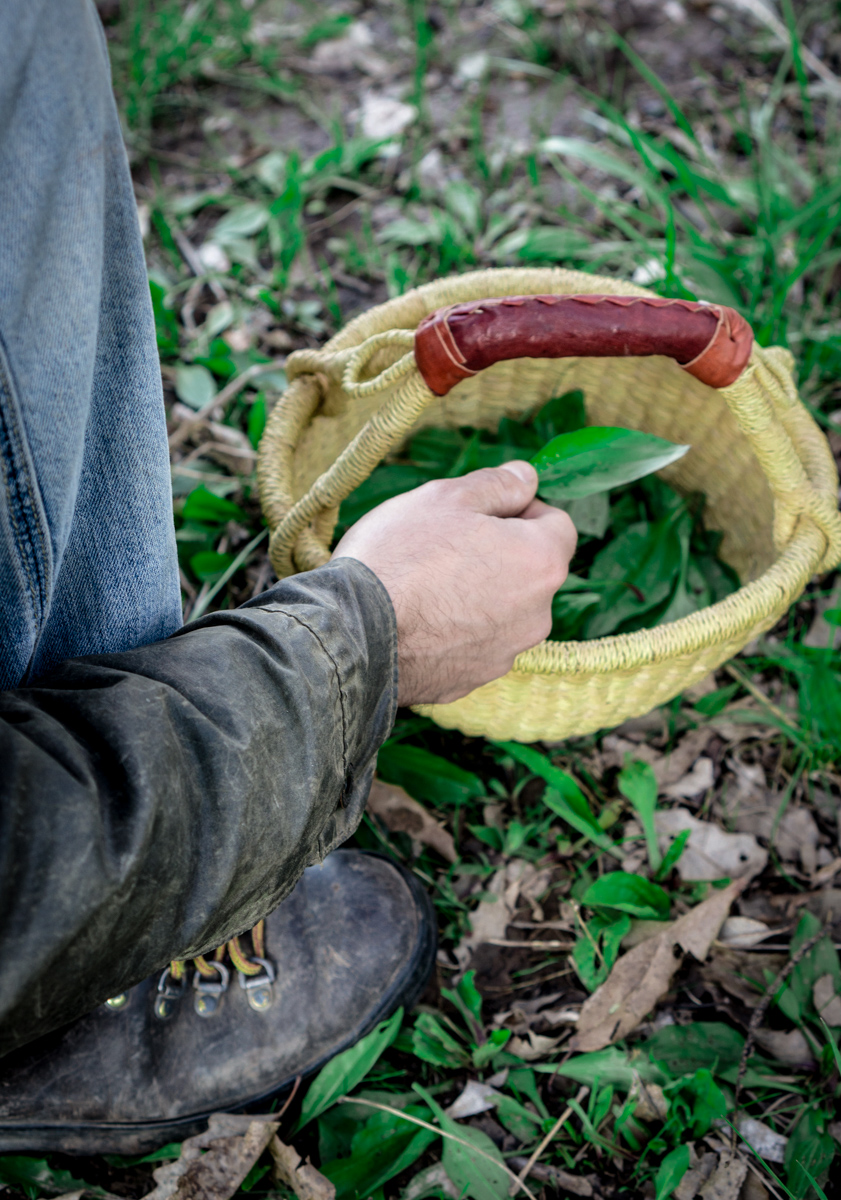
Plantain (Plantago major)
The large-leaf plantain is well known for its ability to assist the body with the process of wound healing (Hoffmann, 2003). Plantain can act as a drawing agent and has long been seen as such (Wood, 1997). The demulcent, anti-inflammatory, and antimicrobial actions of this herb make it a powerful ally in caring for external wounds.
This plant has made a home for itself all around the world. If you are unable to wildcraft this plant, it can be purchased from your local herb shop, or online through many herbal suppliers.
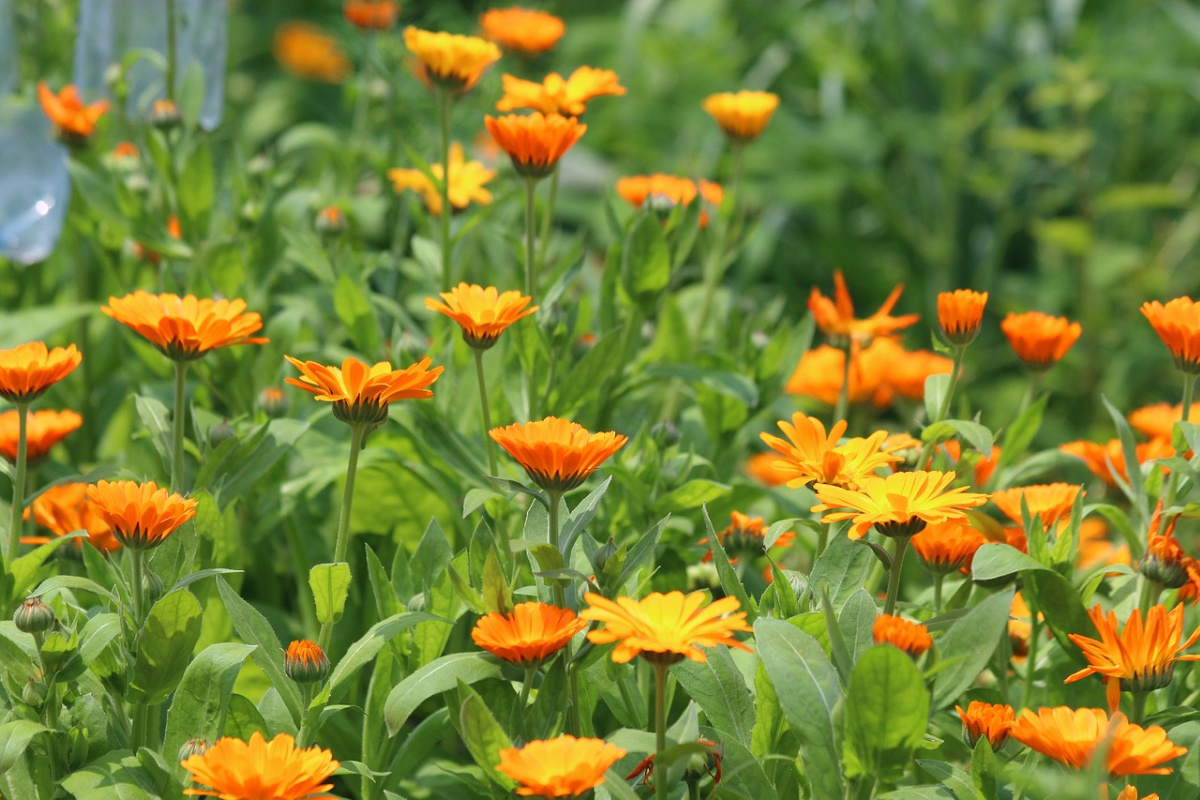
Calendula (Calendula officinalis)
Calendula is a sunny, floral, skin mender. The flowers of this plant can be beneficial for nearly every issue involving inflammation of the skin. From scrapes to rashes, calendula soothes the skin whenever irritation is present (Chevallier, 2002). This powerful ally is also gentle enough to use with babies and children.
With anti-inflammatory, astringent, and antiseptic actions, it’s no wonder that calendula has earned its title as a vulnerary herb (Hoffmann, 2003). You can grow calendula in your garden or a pot if you live in USDA hardiness zones 2-11. You can purchase from an herbal retailer if growing your own is not an option where you live (Missouri Botanical Garden, n.d.).
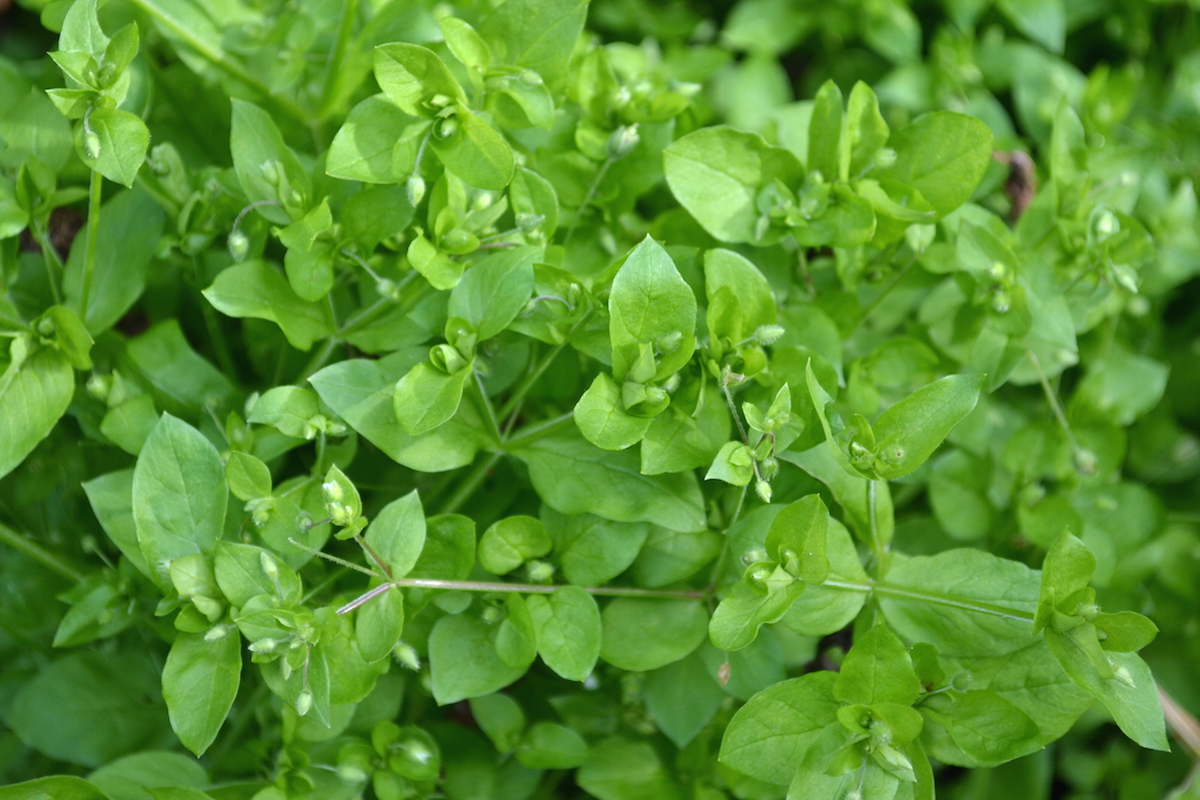
Chickweed (Stellaria media)
If you have an itch, consider chickweed! Both cooling and demulcent in action, chickweed is useful in cases of eczema and nettles rash, and has the ability to soothe itchiness that other herbs can barely touch (Chevallier, 2002).
Chickweed is another readily available plant in most places in the world. As its common name suggests, this herbal ally is commonly regarded as a weed. The aerial parts are best used fresh for the purpose of topical application (Hoffmann, 2003). Some key identifiers for this plant are its creeping viny habit, and soft juicy hairy stems, small oval leaves the entire length of the stems, and tiny white symmetrical star-like flowers, hence the genus name “Stellaria” (Chevallier, 2002).
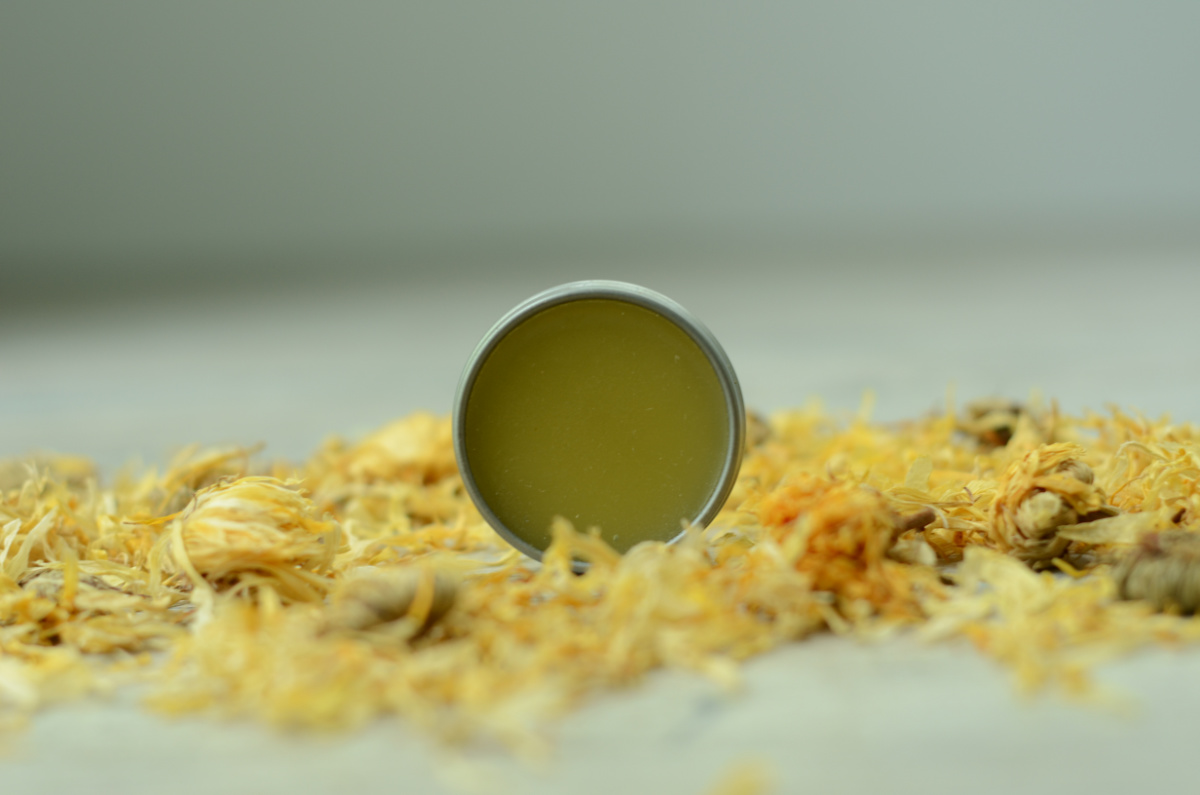
Homemade Bug Bite Salve
A homemade bug bite salve is the perfect way to help you cope with the biting parts of summer!
1 tablespoon plantain leaves (Plantago major)
1 tablespoon calendula flowers (Calendula officinalis)
2 tablespoons chickweed aerial parts (Stellaria media)
6 ounces of your chosen carrier oil
1 tablespoon beeswax pellets
- Comminute the herbs into small pieces using a food processor, blender, grinder, knife or scissors.
- Heat the herbs and oil together in a double boiler, uncovered, for 30 minutes.
- Turn off the heat.
- Allow the oil to fully cool before filtering.
- To filter, line a fine-mesh strainer with a couple of layers of cheesecloth, and pour the oil into a small (4-6 oz) mason jar. This recipe should yield about 4 ounces of fixed oil.
- In a mason jar, combine 4 ounces of infused oil with 1 tablespoon of beeswax pellets.
- Set your oven on its lowest setting.
- Place a baking sheet in your oven to create an even surface across the oven shelf.
- Place the mason jar on the baking sheet.
- Leave the oven door cracked for ventilation. Many ovens’ warm settings are right around 200 degrees, and the ideal temperature for this process is between 100-140 degrees Fahrenheit.
- Warm until the beeswax is fully melted.
- Once the beeswax has melted, carefully remove the jar from the oven.
- Stir to combine the oil and beeswax evenly.
- Let the salve cool on the counter overnight (Green, 2002).
To Use:
You can easily carry a salve this size on the go. Apply this salve as soon as possible after the bite occurs, and regularly as needed until it heals. This bug bite salve can also be used for minor scrapes and rashes.
In Closing,
With the right herbal allies and a few kitchen tools, you can create this homemade bug bite salve to keep your outdoor adventures going strong through the last days of summer and into the cooler days of fall. Gentle and effective herbal allies make this salve safe enough to use with babies and toddlers. Though absolutely intended for topical use only, the edible base ingredients are non-toxic if ingested. A homemade bug bite salve is an all-around win!
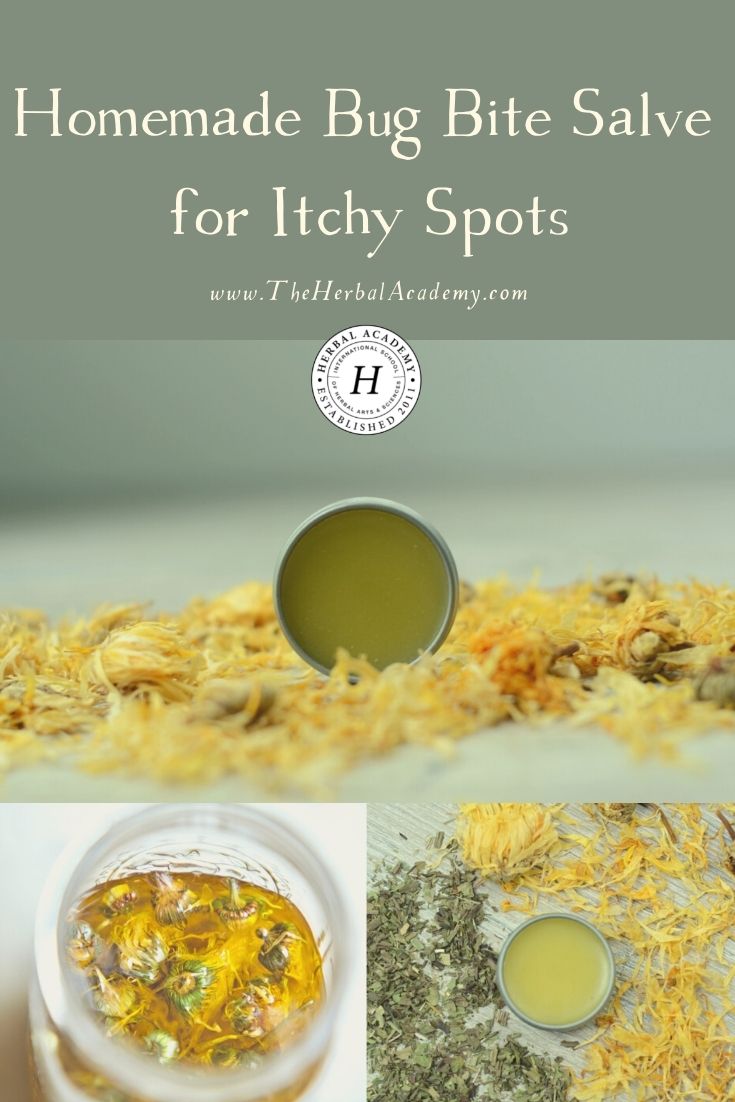
REFERENCES
Chevallier, A. (2000). Encyclopedia of herbal medicine: The definitive reference to 550 herbs and remedies for common ailments. New York, NY: Dorling Kindersley.
Green, J. (2002). The herbal medicine-maker’s handbook: A home manual. New York, NY: Crossing Press.
Hoffmann, D. (2003). Medical herbalism: The science and practice of herbal medicine. Rochester, VT: Healing Arts Press.
Missouri Botanical Garden. (n.d.). Calendula officinalis [Database]. Retrieved from http://www.missouribotanicalgarden.org/PlantFinder/PlantFinderDetails.aspx?taxonid=277409
Wood, M. (1997). The book of herbal wisdom. Berkeley, CA: North Atlantic Books

